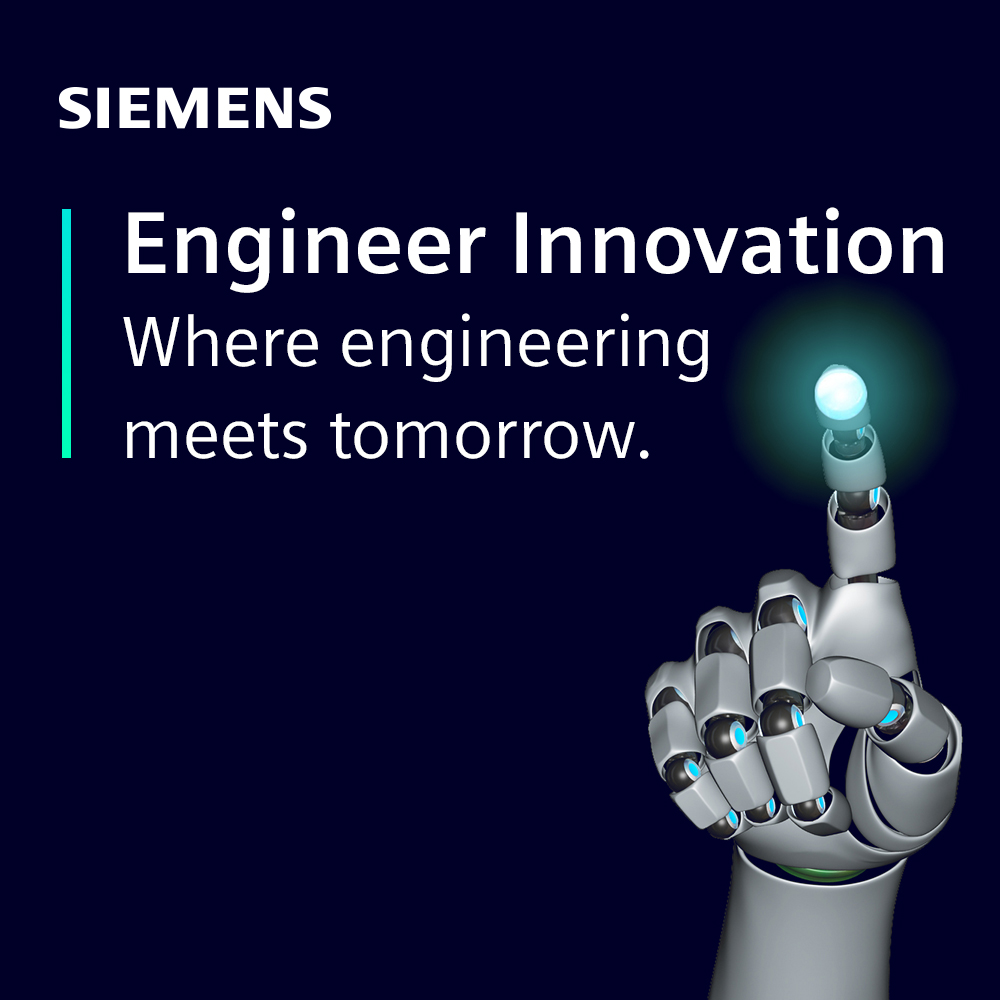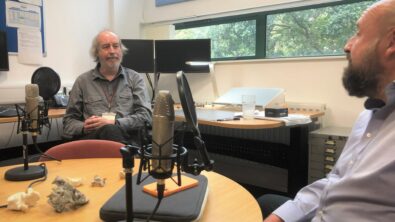Testing the Performance of Electric Vehicles

In this episode, we discuss testing for electric vehicles. What are some of the key attributes? What are some common misconceptions about testing? How early in the design process should you test?
In 2019, the global stock of plug-in electric vehicles was slightly over 7 million. By the end of 2021, that number jumped to over 17 million. On Geoffery A. Moore’s technology adoption curve, we are arguably moving towards the start of an early majority, which will likely drive more innovation and lead to better EV performance.
While the raison d’etre of an EV is identical to that of an internal combustion engine vehicle – getting from point A to point B – it does so without greenhouse gas emissions, a key concern for those attuned to the ongoing climate crisis.
With growing demand and the need to speed up adoption to reach net zero by 2050, how can Simcenter help deliver the EV of tomorrow? In this episode, Katleen Michiels, team manager for Simcenter Engineer and Consulting, provides a high-level view of what testing for electric vehicles entails and how it fits with simulation.
- An overview of Simcenter Engineering testing services for electric vehicle OEMs and suppliers
- The importance of different performance and passenger comfort attributes
- How test data can be leverage
- Common misconceptions about the role testing play in design and simulation
[00:10] Katleen Michiels: My name is Katleen Michiels, and I’ve been over 20 years already with Siemens Engineering Services. I started as a Test Engineer. Currently, I’m heading up the testing group within Engineering Services in the Center of Excellence of Performance Engineering.
[00:28] Chad Ghalamzan: So, what exactly does Engineering Services do?
[00:31] Katleen Michiels: Engineering is more of a bridge between our customers and the solutions from Siemens – so, the technology and the software and hardware that Siemens has, we apply that to the questions from our customers. We discuss how we could tackle what needs to be modelled, which tests are required for that, what type of analysis, etc. And then we often go on-site to the customers, do the instrumentation and the measurements, we show them what to do, how and why we do that. Then we come back to Belgium and we process all the data that we gathered to build a model of that product; find the crucial hotspots – so, what are the weak points there; make modifications and then discuss, of course, with the customer what they can do about the product. And then often that is followed by technology transfer and an explanation of the Siemens solutions, of course.
[01:22] Chad Ghalamzan: Why the testing team? I mean, I’m presuming you could have joined any other team you wanted. What’s appealing about that?
[01:29] Katleen Michiels: My first job at Siemens was at the test division, and there I was a customer support engineer. So, I learned a lot about software and what it can do, so I rolled into that. I liked the interaction with the customers, what their application was, how the software was used, and the development of actual products. And then after a few years, I moved to Engineering Services, and then I could really be part of improving customers’ products and all the variety of tests. So, it goes from washing machines to brakes or steering systems, airplanes, excavators, I did many types of vehicles. And the nice thing about it is that it’s over the entire world, so projects in the US and all over Europe. So, that’s nice.
[02:12] Chad Ghalamzan: The main reason why we’re talking today is because recently you and your daughter participated in our “Bring Your Kids to Work” video series. What made you and your daughter, Amelie, decide to participate?
[02:23] Katleen Michiels: Seemed like fun when we were asked to participate. For youngsters, it’s not always easy to imagine what your parents are doing all day at work, and engineering or something with cars was a bit fake for her. It was also a nice experience to do that together with her.
[02:39] Chad Ghalamzan: Amelie seems to have an interest in climate change. She participated in the climate change marches. It seems to be a subject important to her. Do you know where this interest comes from? Is it something that you share with her, a concern for the climate?
[02:54] Katleen Michiels: We indeed do share the concern about climate changes. At home, we’ve installed solar panels, of course, carefully sorting the garbage and reducing the amount of meat we eat. We have an electric vehicle as well. But Amelie goes further than that, together with her friends, and I think amongst youngsters, it is really alive. She let her voice be heard at the climate demonstrations. So, she’s more outspoken than me. But it is indeed something that we do care about, and the concern about climate change is in our family.
[03:26] Chad Ghalamzan: So, you mentioned you have an electric car. And that’s one of the ways that’s considered an effective measure to reduce carbon dioxide emissions. But there’s been a sharp increase in sales and demand for them in the last few months. But really prior to that, excluding some regions with higher adoption rates, electric vehicles haven’t come close to outselling conventional combustion engine cars. Do you think we’re at a turning point?
[03:48] Katleen Michiels: I’m definitely sure that we need to transition to electrification now. So, in our work at engineering, we’re dealing with a new generation of vehicles, so the cars that are still under development. And many OEMs have in their targets to increase the amount of electric vehicles and amount of models of electric vehicles. Even though, from fully electric to older models, some manufacturers are hitting their targets. It will take some time, but I’m convinced that the amount of combustion vehicles in the United States will definitely decrease in the future. We’re rather in the beginning of the development era, but to see what’s out there and what the manufacturers are making and targeting, it is less and less combustion and more and more electrification.
[04:32] Chad Ghalamzan: So, besides supply chain issues, does that bring up new design issues? Is that an additional challenge for your team, this increased interest in demand for electric vehicles?
[04:44] Katleen Michiels: The type of projects and the focus is changed a bit. So, the performance is still the same, but the way how the card works and actually the indication that also brings that, let’s say, noise and vibration, performance is different. So, it definitely has an effect on our team and what we do, that we have also to make the translation of what we did for combustion vehicles, how to apply that, and see what else is important for electric vehicles.
[05:14] Chad Ghalamzan: Can you give us a little bit of a high-level view of what testing for an electric vehicle entails? What are some of the different performance attributes you’re looking at?
[05:23] Katleen Michiels: There are different types of testing we do. So, that depends a bit on the performance to study. For example, you can focus on road noise, you can focus on the pure motor performance around handling, and different types of testing depending on the development phase of your vehicle, or more benchmarking for target setting, or you go for component characterization for modeling and simulation, or you just want to have relevance and good input loads for models. So, that depends a bit on the performance attribute, and what you measure depends a bit on the type of project or the type of focus you have at hand.
[06:02] Chad Ghalamzan: But I’d like to maybe dive a little bit deeper in some of those performance attributes you just mentioned: What are we doing to test for this? How are we helping OEMs to reduce road noise?
[06:11] Katleen Michiels: Maybe interesting to know is that compared to combustion engines, for example, they are typically loud at lower frequencies depending, of course, on the type and the size of the engine, you can imagine the noise of a four-cylinder is quite different from an eight or more cylinder. But let’s say, in general, up to 400 or 500 hertz is engine noise when it is a combustion vehicle. And in many driving conditions, that noise is masking all kinds of other noises. For example, like you said, tire noise and road, but also echo, pump, etc, those noises are masked. And the main focus in the past was to tackle the parameters that really influenced the engine noise to reduce that noise and to make the vehicle more sound-comfortable, making sure that you can still have a conversation with the people at the backseat. So, that was really, for many driving conditions, that was important. Now, electric motors are more silent at the lower frequency ranges, which means that they are not masking those noises anymore. But on the other hand, they have done a sharper higher frequency noise. But now, for example, the parameters that are tackling the low-frequency road noise, like you asked, they become much more important now. And not only at the constant speed cases like you had for the combustion engine. So, now, for many more driving conditions, those road noise is important.
[07:36] Chad Ghalamzan: Tire noise is much louder in electric vehicles. We haven’t really redesigned tires, we’ve just used the same type of tires that were on a combustion vehicle.
[07:43] Katleen Michiels: Oh, no, that is not the case. So, typically, there are larger tires for electric vehicles. Also, the body as such is different because you have this huge and heavy battery underneath, so the shape and the behavior of the body is different, stiffnesses is different, model behavior is different, the suspension is different, and very often you have also motors are on the front and on the rear, connected also to the subframe and the suspension. Sometimes they even have wheels within wheel motors. So, all that has an effect on road noise as well. So, it is not just a copy-paste from compression engines that you can say, “Okay, we use the same technique but we have to be more careful for the road noise because there is less masking by the engine.” Also the behavior of the vehicle is quite different because the components are different.
[08:36] Chad Ghalamzan: But do you think we’re just starting that rethink? Or do you see more innovation coming now that we’re seeing higher adoption with electric vehicles?
[08:45] Katleen Michiels: I think the innovation in, for example, the in-wheel motors, that is already started that, but that this may be something that we will see more often. I think we’re playing with the amount of mortar, so there will be a difference, I think more of an optimized way of where to put the battery. The original ones, so the first version of the electric vehicles, there it was really a lot of batteries in the tunnel or in the trunk. And now actually we start more or less from scratch, you make a vehicle body but actually you already take into account where would it be best to have an optimized position of the batteries.
[09:23] Chad Ghalamzan: What’s the most challenging?
[09:24] Katleen Michiels: One of the challenging things that we see now is that, per vehicle, let’s say a lot of failures come out. Like I said, for the same vehicle you can have different types of motors, different kinds of diving control settings, the motors are very often independent and not linked to each other, different sizes. So, for that, the challenge is to have a way to play with the different variants and understand what the interaction of all those different components is. So, make a combination of test and simulation really make models – so, vehicle representations. And make sure that it’s easy to keep track of all the variants. A good data management system is definitely necessary. And an early stage, let’s say if you can play with the different variants, you can already see and do some predictions in early stage, which combinations would give me the best performance and preferably different performance, not only in V8 but also pure motor performance, you can go to handling as you can really make it multiattribute.
[10:31] Chad Ghalamzan: Is there something you think, especially when you talk to potential customers, what they misunderstand the most about what testing does in terms of what you offer an OEM?
[10:41] Katleen Michiels: Let’s say, the misunderstanding which is the most common is that people think that test is only something in the last stage of vehicle development, that it is only to troubleshoot latest version of the prototypes for the last minute improvements. And that’s not at all the case. So, testing can take place in the beginning for target setting using predecessors or the best-in-class vehicles already on the market, getting realistic input loads for early-stage modeling. We can test on components for correlation, reverse engineering for parameter characterization, all in function of improving models. Hardware-in-the-loop configurations is also a set of testing that we do. So, in all stages of the development cycle, there is a way where you can test and it is very often in combination or in function of simulation of models.
[11:30] Chad Ghalamzan: So, that testing then factor into the simulation, is that how you proceed? You take this test data, how do we plug it back into our digital twins?
[11:39] Katleen Michiels: There are different ways. So, you just have the loads, you measure the loads, that is very often a combination of measurement and a calculation. And then you apply that to a simulation that is rather straightforward. Or when you have a characterization of components that you have measured, and then you have also a simulation model, you can really do a correlation of that. When it’s well-correlated, then you can use the simulation model to make further improvements. And you can do that also in the digital twin format. So, then you use it really as validation that are of the two ways. There is also a possibility, like I said, the hardware-in-the-loop, where you have a complete model or all of your test bench, all of your vechicle, where a part is hardware, and then you can really test performance on that piece of hardware, and then it’s really, in one cycle, a combination of test and simulation in one cycle. So, there are different ways, all it is as validation. And what also happens sometimes is then you make a test-based model of a certain component. For example, when you want to focus on a suspension and you know that the body part you will keep still or will remain the same, then you can make a simpler presentation based on a test. And then you couple that to a simulation of your suspension. And then you can calculate whatever modification and improvement you would like on the suspension. So, then you really make a “hybrid model” – part is test and part is simulation, and you can make one big model.
[13:05] Chad Ghalamzan: It’s really a very complex thing. I mean, we’re not looking at just one attribute, realistically going to electric vehicles, the whole vehicle is being rethought, all the different components, all the different attributes can be re-examined. Do you think there’s one that has not received as much attention? A vehicle performance attribute that you think that in the next few years, we’re going to see more attention paid to. We’ve talked about tire, we’ve talked about road noise. Another attribute you think is under-innovated or under-examined?
[13:37] Katleen Michiels: Yeah, it is a smaller component, but what we see often is, like I said, the masking and the missing of the masking of the engine, other noises like air conditioning, or thumping, or little electric motors for steering – those things, you hear them now. So, the development on those components, that will require attention as well because before it was mainly about the performance that they do, only what they have to do, and not so much the noise or not necessarily the noise, and now the noise is becoming also a comfort KPI.
[14:10] Chad Ghalamzan: We can hear everything now. In some ways, the combustion engine saved you from all that consideration.
[14:20] Katleen Michiels: It had less attention before and more now because electric motors are much quieter than combustion ones, especially in the lower frequencies. In the higher frequencies, you typically have this sharp noise. What you see is that, for example, in cities, while there is a lot of background noise, you don’t always hear the car coming. So, for pedestrian safety, it’s important that they don’t cross the street when a car is coming. So, more attention than before is say active sound; really making sound to alarm the pedestrians that you can hear a vehicle coming, and that is not just a fixed noise, so you would like to have also a relation with the speed and direction where the car is coming from. Also, typically, that is brands dependent; sometimes you have sportive cars, you have more family comfort car. So, that is really brand characteristic, what kind of noise or active noise like to have. So, there is more and more attention, also, Siemens to help to develop what kinds of noise, how to make it dependent on the speed and have this direction info, where in your career your speakers must be so that there is a kind of surrounded noise.
[15:36] Chad Ghalamzan: Are there other safety features that you work on? Some cars have automated braking or more sensors.
[15:43] Katleen Michiels: Oh, yeah, it’s full of controls now.
[15:47] Chad Ghalamzan: That’s another level of complexity for testing – a lot more electronics?
[15:50] Katleen Michiels: Yes. Correct. That’s definitely also a challenge. It’s less pure mechanical. There is a lot of electronics and controls in the vehicle.
[15:59] Chad Ghalamzan: I will talk a lot about personal transportation, so electric vehicles, that’s obviously what the focus of the conversation has been. But can we talk about other road vehicles? There are other things on the streets; there are buses for public transportation, but there are also cargo and trucks and these types of vehicles. Are you seeing anything there? Are you doing more and more work in that area as we look to maybe expand electrification from just personal transportation?
[16:28] Katleen Michiels: Also for buses, trucks, but also off-road vehicles, there also electrification starts. We also see them. My impression is that indeed, today, they started a bit later than the passenger cars, but also there, especially for buses, you already see that in a city so that the city versus are electric as well, and that has to do with the CO2 emission. The tracks, that is more difficult, because they really have to go for a longer distance. So, that is that is coming. What you also see is for, let’s say, small excavator, some things there you also see electrification.
[17:05] Chad Ghalamzan: So, is it the same type of attribute? Is noise as important to look at? Or are we looking at a different set of factors here that really are important when you’re looking at a truck or heavy equipment that’s being electrified?
[17:18] Katleen Michiels: Noise is important but that is not the main issue. Noise has never the main issue. So, safety and handling very often have more priority than noise. Noise is a comfort thing. But also for those vehicles, noise is important. Of course, for them, also, the range is important and durability. Especially, for trucks and for off-road vehicles durability is very, very important as well. But we have projects where the focus was on noise and vibrations, especially when the drivers are sitting in the vehicles for hours. So, some comfort is welcomed.
[18:00] Chad Ghalamzan: Do you have a sense of what kind of shortening of their development time we’ve been able to offer our customers in terms of when they approach us for a project?
[18:09] Katleen Michiels: Shortening in development time, that is possible. So, if you’re part of a total vehicle program, for example, there are ways of unified testing, meaning that you define all kinds of testing at the beginning, where it is not only focusing on the noise but can also focus on all the other attributes and combine those tests because very often you measure same sensor set or the same accelerations, the same torques for different performances. So, there is a way how to speed up by unified testing. So, that is an example of how you can do faster. Definitely a way of keeping track of your models and making sure that your different divisions can use the same models. Scalability is another thing. So, if you have models, you have simplified models from an early stage, and then you can just easily change them to a more in-depth model. And if that is well under control, the data management system, then you can definitely speed up. A lot of things are redone or not efficiently done because of having to redo things or starting all over from scratch. Also, by using more simulation, a lot of models that we made or pure test, or simulation-based models, where the initial model is validated through a test, but then you have a lot of variants that you can calculate in your simulation. And with all those simulated models, you can already do prediction for noise and vibration for other performances in early stage. And with that, you can already calculate, “Okay, which components can I go further in, or which design changes are important, which has a chance of succeeding, and which is actually a dead end.” If you play with that early upfront, then your cycle can go faster as well because you can really do predictions and exclude certain design changes based on models.
[19:57] Chad Ghalamzan: So, we started the conversation talking about your daughter and the video that you did together. So, do you feel that your daughter has an appreciation now for all this after doing the video? Do you think she walked away understanding all of this?
[20:11] Katleen Michiels: I don’t think that she understands what we’re doing here. I think she likes that too that we’re doing something sustainable, that we’re working on this electrification in general. But as you said in one of our last sentences, “That’s all nice, but I will go and study pharmacy.” So, I think she likes it, but not for her.
[20:33] Chad Ghalamzan: I guess you take a sense of pride in knowing that you’re working on something that’s helping to fight climate change for her future.
[20:41] Katleen Michiels: Indeed.

Chad Ghalamzan, your host
Chad Ghalamzan is a content creator for Siemens Digital Industries Software, focusing on simulation and testing. He plans on buying an electric vehicle in the near future.

Katleen Michiels, our guest
Katleen Michiels is the Team Manager for Simcenter Engineering & Consulting at Siemens PLM Software. Katleen concentrates on i
Stuff to watch:
- Bring Your Kids to Work Day | Electric Vehicles
- Engineer of the future
- Podcast: The birth of Simcenter
- Ride the digital wave with CFD simulation
Good reads:

Engineer Innovation Podcast
A podcast series for engineers by engineers, Engineer Innovation focuses on how simulation and testing can help you drive innovation into your products and deliver the products of tomorrow, today.


